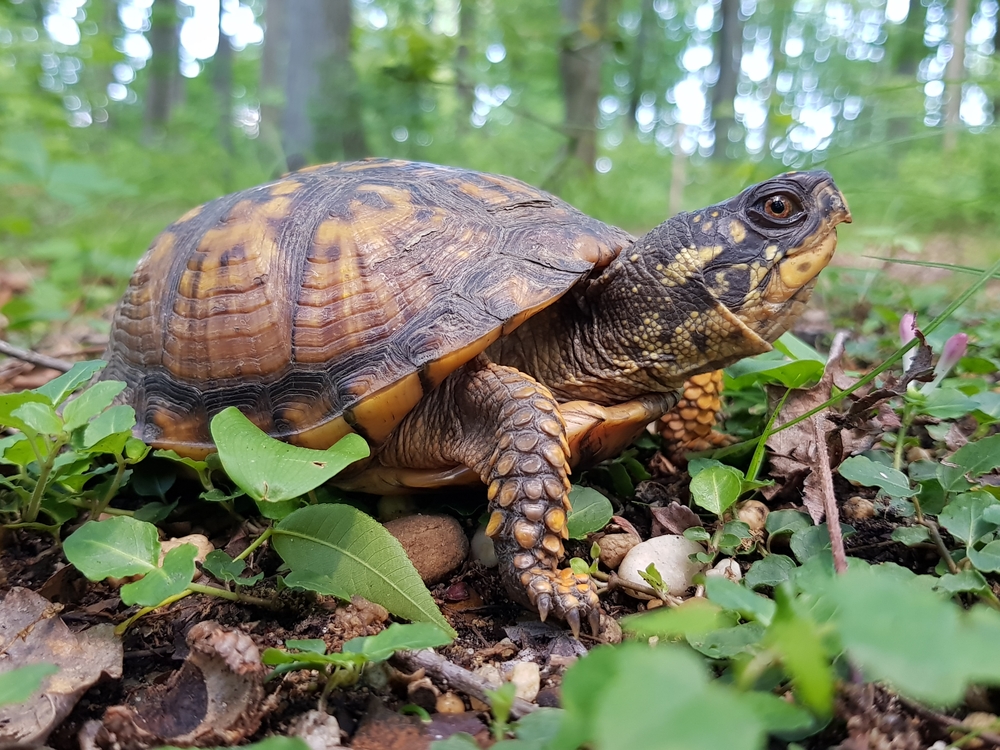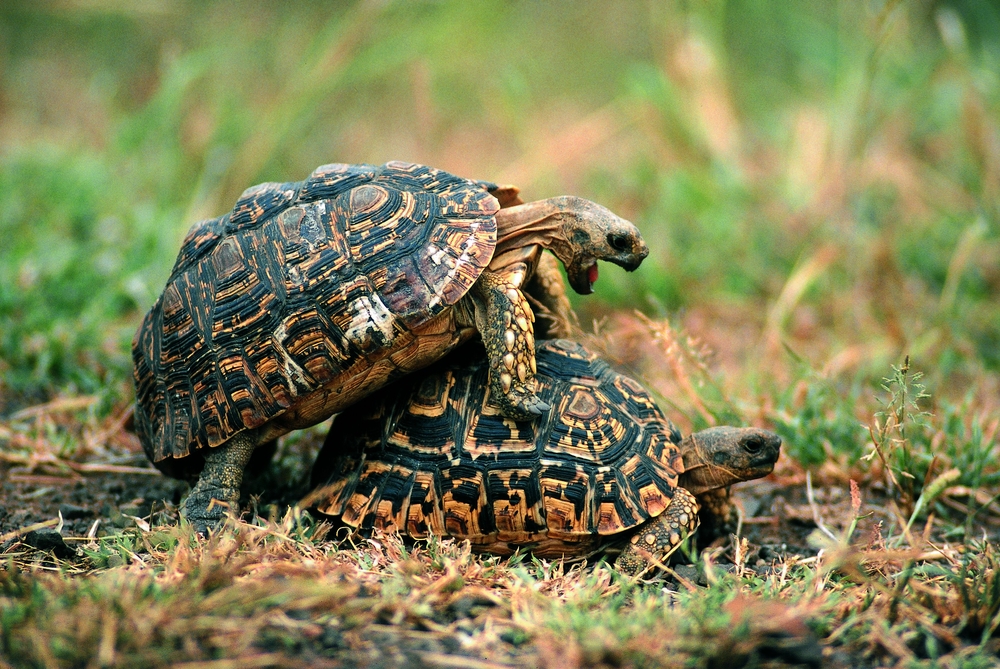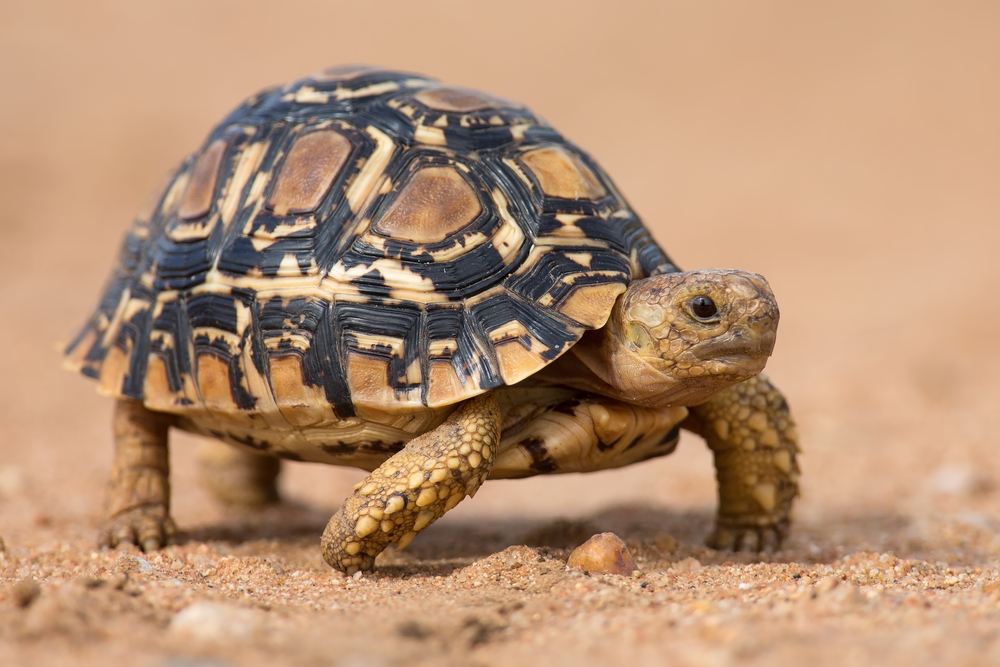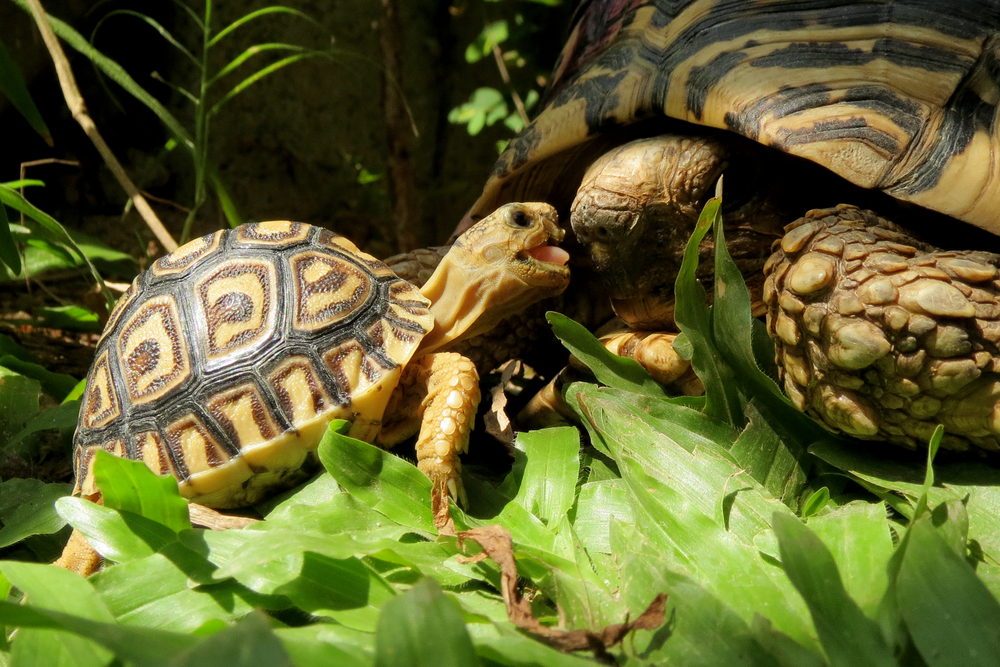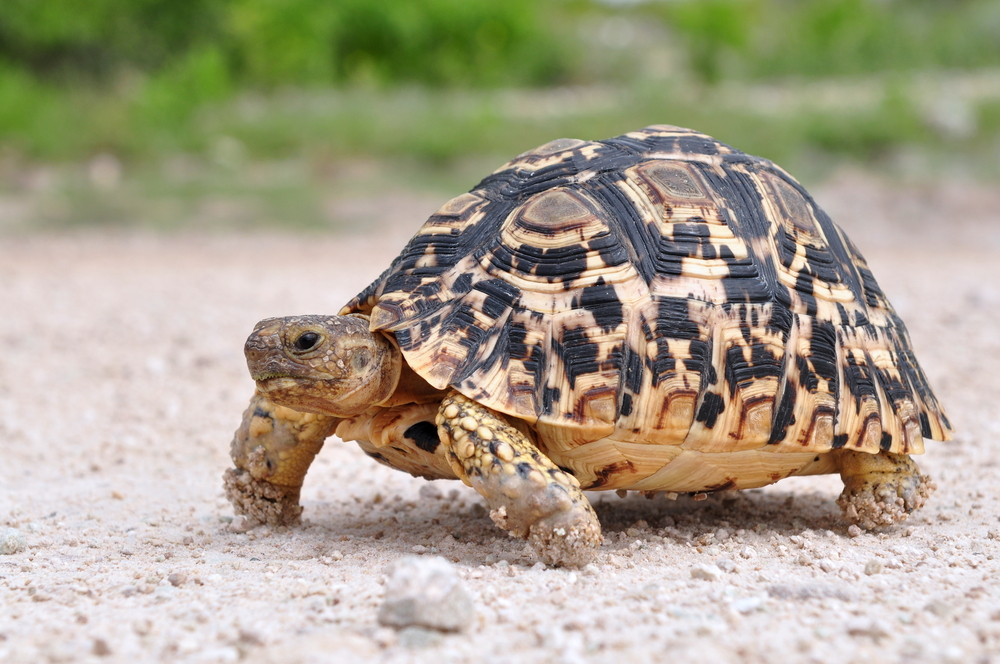Leopard Tortoises and Box Turtles are two distinct species of reptiles that belong to different families and exhibit several notable differences in terms of their physical characteristics, habitat, behavior, and geographic distribution:
1. Taxonomy and Family:
- Leopard Tortoise:
- Family: Testudinidae (Tortoises)
- Box Turtle:
- Family: Emydidae (Pond Turtles and Box Turtles)
2. Physical Characteristics:
- Leopard Tortoise:
- Larger size, with some individuals reaching over 30 inches (76 centimeters) in length.
- High-domed, smooth shell with leopard-like patterns.
- Adapted to terrestrial life with sturdy, column-like legs.
- Herbivorous diet primarily consisting of plant material.
- Box Turtle:
- Smaller size, typically ranging from 4 to 8 inches (10 to 20 centimeters) in length.
- Domed shell with a hinged plastron that allows the turtle to close itself inside the shell for protection.
- Short, sturdy legs with webbed feet in aquatic species.
- Omnivorous diet, including a mix of plants, insects, and other small prey.
3. Shell Structure:
- Leopard Tortoise:
- High-domed and smooth shell without the ability to close completely.
- Shell patterns vary but resemble leopard spots.
- Box Turtle:
- Domed shell with the ability to close completely, offering protection from predators.
- Shell coloration and patterns vary among species and individuals.
4. Habitat:
- Leopard Tortoise:
- Found in arid and semi-arid habitats in sub-Saharan Africa.
- Box Turtle:
- Native to North America and primarily inhabit forests, grasslands, and wetland areas.
5. Behavior:
- Leopard Tortoise:
- Terrestrial and primarily graze on vegetation.
- Slow and deliberate movements.
- Box Turtle:
- Terrestrial and semi-aquatic, with some species spending time in water.
- Capable of retracting entirely into their shell when threatened.
6. Geographic Distribution:
- Leopard Tortoise:
- Native to sub-Saharan Africa.
- Box Turtle:
- Native to North America, with various species found in different regions.
7. Conservation Status:
- Leopard Tortoise:
- Conservation status varies among subspecies; some are listed as vulnerable or near threatened due to habitat loss and the pet trade.
- Box Turtle:
- Some species of box turtles are listed as threatened or endangered due to habitat destruction, road mortality, and illegal collection.
In summary, Leopard Tortoises and Box Turtles are distinct reptile species with differences in size, shell structure, habitat, diet, and geographic distribution. While both are fascinating in their own right, they have evolved to thrive in different ecological niches and exhibit unique adaptations.





































































